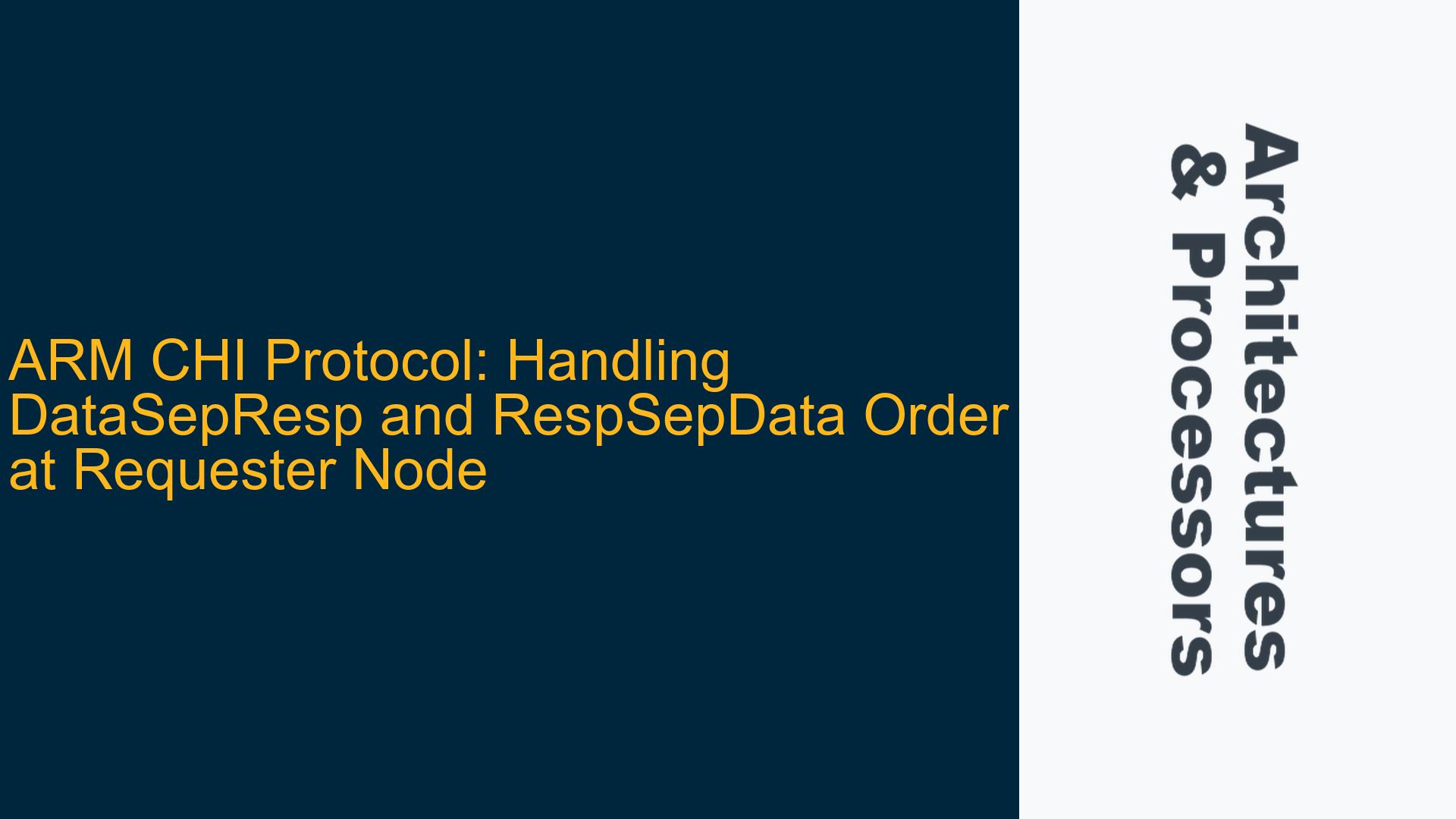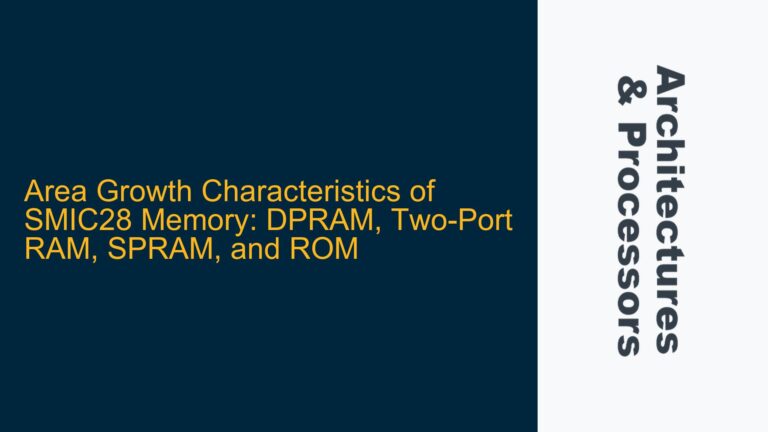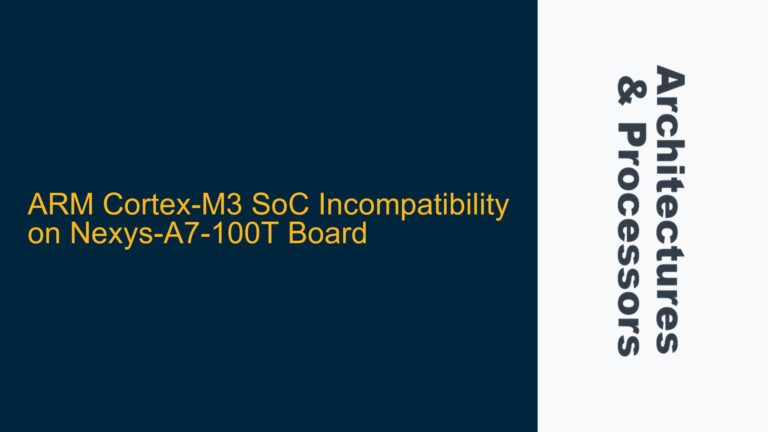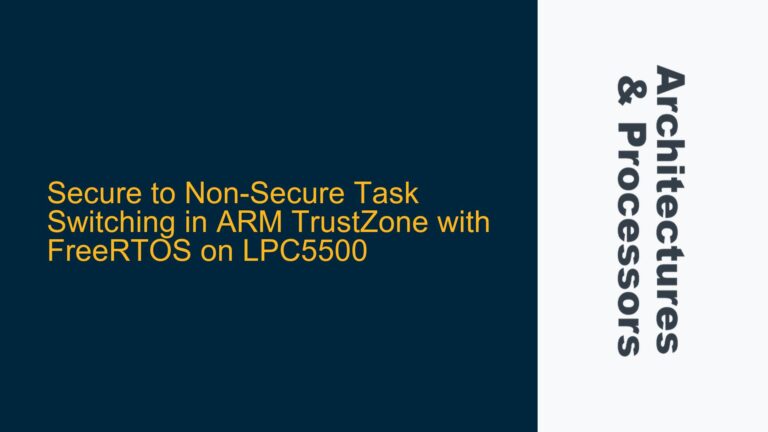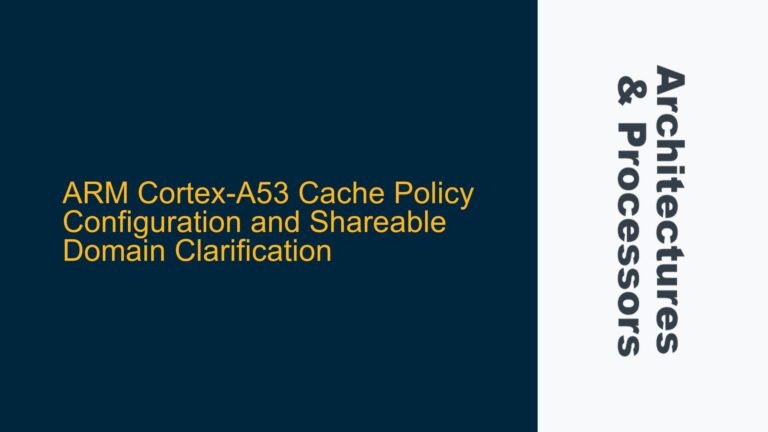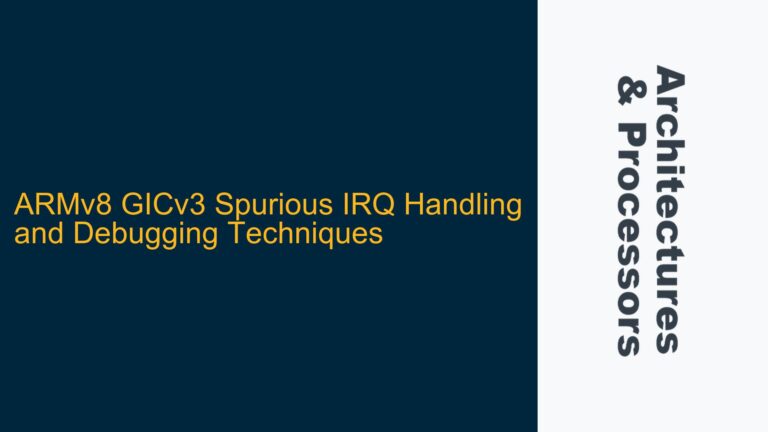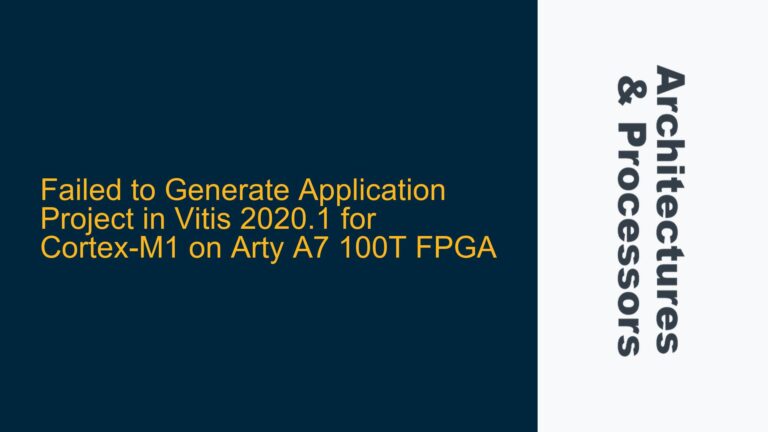ARM CHI Requester Node: DataSepResp and RespSepData Order Ambiguity
In the ARM Coherent Hub Interface (CHI) protocol, the handling of separated responses, specifically DataSepResp and RespSepData, at the Requester Node can lead to ambiguity in system behavior. The CHI protocol allows for the separation of data and response messages to optimize bandwidth utilization and reduce latency. However, this separation introduces complexity in the ordering and processing of these messages at the Requester Node. The core issue revolves around whether the Requester Node can receive DataSepResp and RespSepData in any order, and if so, how the Requester Node should process these messages to ensure correct system behavior.
The CHI protocol specification does not explicitly mandate a strict ordering between DataSepResp and RespSepData, which implies that these messages can arrive in any order. This flexibility is intended to allow for efficient handling of responses in a distributed system where different components may have varying latencies. However, this flexibility also introduces potential challenges in ensuring that the Requester Node correctly processes these messages, especially when DataSepResp arrives before RespSepData.
The ambiguity arises from the fact that the Requester Node must determine whether it can proceed with the usual processing of the request after receiving a DataSepResp before a RespSepData. If the Requester Node proceeds with processing based solely on the DataSepResp, it may encounter issues if the RespSepData contains critical information that alters the state or outcome of the request. Conversely, if the Requester Node waits for both messages before proceeding, it may introduce unnecessary latency, negating the benefits of the separated response mechanism.
Memory Coherency and Protocol Compliance in CHI Separated Responses
The potential causes of the ambiguity in handling DataSepResp and RespSepData at the Requester Node can be attributed to several factors related to memory coherency and protocol compliance. One of the primary causes is the lack of explicit ordering constraints in the CHI protocol specification. While the protocol allows for the separation of data and response messages, it does not provide detailed guidance on how the Requester Node should handle these messages when they arrive out of order.
Another contributing factor is the complexity of the memory coherency model in ARM-based systems. The CHI protocol is designed to support a highly coherent system where multiple agents (e.g., CPUs, GPUs, DMA controllers) may access shared memory resources. In such a system, the order in which data and response messages are processed can have significant implications for memory coherency. If the Requester Node processes DataSepResp before RespSepData, it may inadvertently violate the memory coherency model, leading to data corruption or incorrect system behavior.
Additionally, the implementation of the CHI protocol in different IP blocks may introduce variations in how separated responses are handled. For example, some IP blocks may be optimized for low-latency processing and may prioritize the handling of DataSepResp over RespSepData, while others may adopt a more conservative approach and wait for both messages before proceeding. These implementation differences can lead to inconsistencies in system behavior, especially in heterogeneous systems where multiple IP blocks from different vendors are integrated.
The lack of a standardized approach to handling separated responses in the CHI protocol also contributes to the ambiguity. While the protocol provides a high-level framework for separated responses, it does not specify the exact mechanisms that the Requester Node should use to ensure correct processing of these messages. This lack of specificity can lead to different interpretations and implementations, further complicating the issue.
Implementing Robust Handling of Separated Responses in CHI Requester Nodes
To address the ambiguity in handling DataSepResp and RespSepData at the Requester Node, several troubleshooting steps, solutions, and fixes can be implemented. The first step is to carefully review the CHI protocol specification and identify any implicit or explicit constraints on the ordering of separated responses. While the protocol does not mandate a strict ordering, it may provide guidance on how the Requester Node should handle these messages to ensure correct system behavior.
One potential solution is to implement a state machine at the Requester Node that tracks the receipt of DataSepResp and RespSepData messages. The state machine can be designed to ensure that the Requester Node does not proceed with processing the request until both messages have been received. This approach ensures that the Requester Node has all the necessary information to correctly process the request, regardless of the order in which the messages arrive.
Another solution is to introduce additional checks and validation mechanisms at the Requester Node to ensure that the processing of DataSepResp and RespSepData messages does not violate the memory coherency model. For example, the Requester Node can be designed to validate the contents of the DataSepResp message against the expected data based on the RespSepData message. If any discrepancies are detected, the Requester Node can trigger an error handling mechanism to prevent incorrect system behavior.
In addition to these solutions, it is important to consider the impact of separated responses on system performance. While waiting for both DataSepResp and RespSepData messages before proceeding can ensure correct system behavior, it may also introduce additional latency. To mitigate this impact, the Requester Node can be optimized to handle separated responses in a way that minimizes latency while still ensuring correct processing. For example, the Requester Node can be designed to speculatively process the DataSepResp message while waiting for the RespSepData message, and only commit the results once both messages have been received and validated.
Finally, it is crucial to thoroughly verify the implementation of the Requester Node to ensure that it correctly handles separated responses under all possible scenarios. This verification process should include both simulation-based testing and formal verification to identify and address any potential issues. The verification environment should be designed to cover a wide range of corner cases, including scenarios where DataSepResp and RespSepData messages arrive in different orders and with varying latencies.
In conclusion, the ambiguity in handling DataSepResp and RespSepData at the Requester Node in the ARM CHI protocol can be addressed through a combination of careful protocol analysis, robust state machine design, additional validation mechanisms, performance optimization, and thorough verification. By implementing these solutions, designers can ensure that the Requester Node correctly processes separated responses, maintaining both system correctness and performance.
